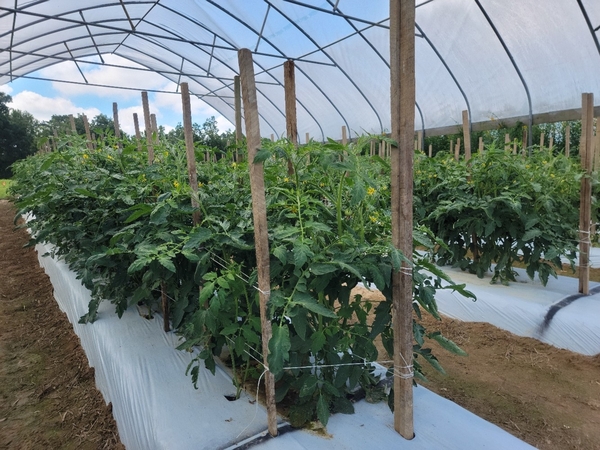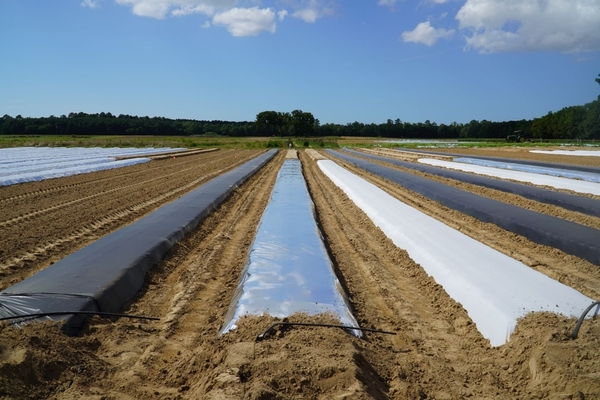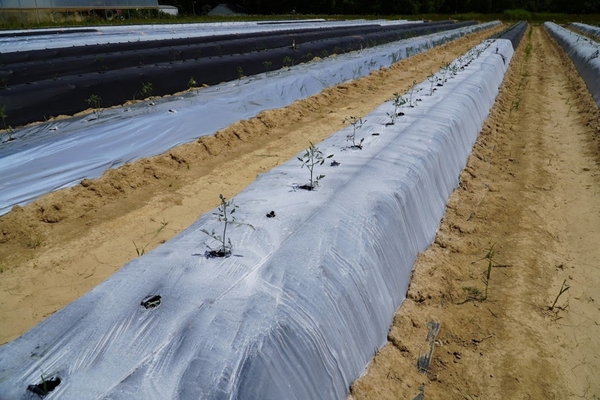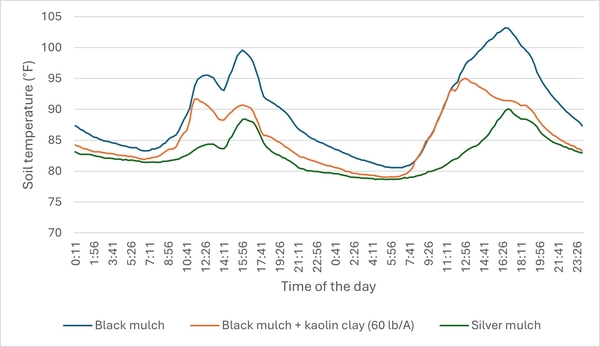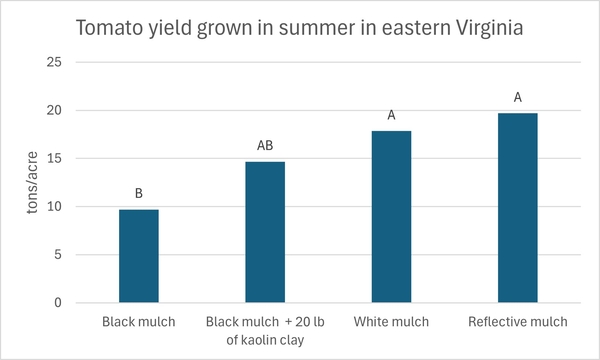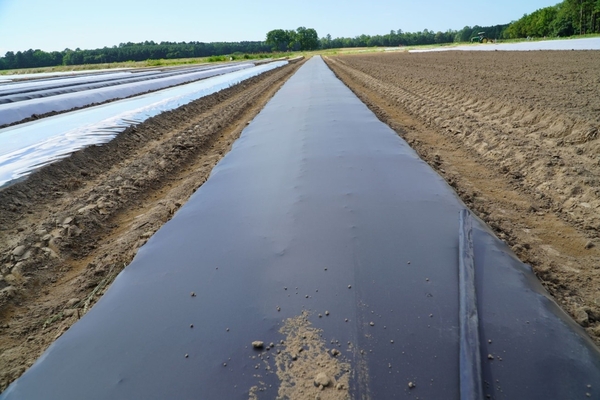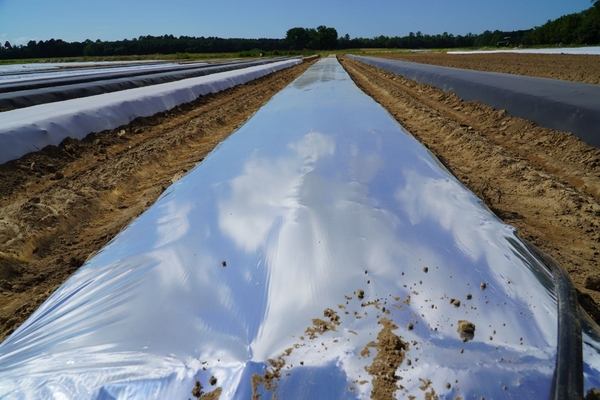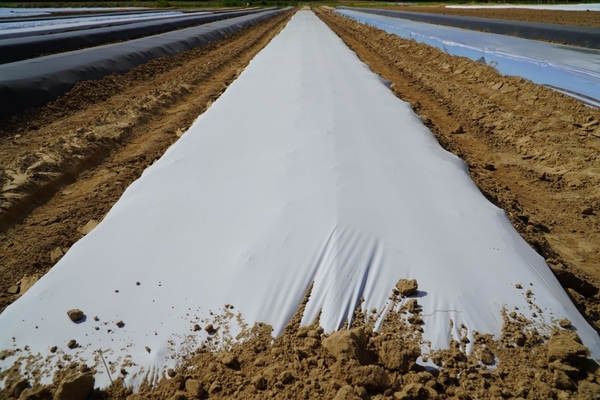Growing tomatoes during the summer in North Carolina can present significant challenges due to high temperatures and irregular rainfall. These conditions can shorten the growing season, reduce yields and fruit quality, and increase pest pressure. This guide provides insights into selecting the most suitable plastic mulch to mitigate these issues.
The Impact of Heat Stress on Tomato Plants
Heat stress is a major concern for tomato growers, particularly as global temperatures continue to rise. Optimal growing temperatures for tomato shoots are between 77°F and 86°F during the day and around 68°F at night. Temperatures exceeding 95°F can adversely affect seed germination, vegetative growth, flowering, and fruit ripening. High temperatures can lead to water loss through transpiration that exceeds absorption, disrupting plant metabolism and inhibiting growth. Maintaining root-zone temperatures near 77°F is crucial for optimal nutrient and water uptake. When soil temperatures rise above this threshold, it can negatively impact root function and overall plant health.
Choosing the Right Plastic Mulch
The type of plastic mulch you choose can significantly influence soil temperature and plant health. Here are the main options:
- Black Mulch: This mulch absorbs most wavelengths of light, converting them into heat. It helps to warm the soil and is beneficial in cooler months or climates where additional heat is needed for early growth.
- White and Reflective Mulch: These mulches reflect most wavelengths of light, keeping soil temperatures lower. They are ideal for use in summer or warmer climates to prevent excessive soil heating.
- Studies indicate that the effectiveness of different mulches can depend on planting dates and growing conditions.
Cost Considerations and Benefits
Different types of mulch come with varying costs. Black mulch is generally the most affordable, whereas white and reflective mulches are more expensive but can provide additional benefits like pest deterrence and better heat management. Choosing the right mulch can help reduce overall production costs by improving plant health and yield.
Kaolin Clay: An Organic Alternative for Black Plastic Mulch
Kaolin clay is a non-toxic mineral that can be applied to plants as a spray to reduce heat stress. It forms a reflective barrier on plant surfaces, lowering exposure to harmful ultraviolet and infrared radiation. Research has shown that kaolin clay can reduce leaf and fruit temperatures by 3.6°F to 9°F and decrease the incidence of pests like thrips and stink bugs. In tomatoes, the use of kaolin clay has led to significant reductions in Tomato Spotted Wilt Virus and increased yields (Figure 3).
Recent studies indicate that applying kaolin clay to black mulch can effectively reduce soil temperatures from 104°F to 95°F during the hottest periods of the day (Figure 4). This approach achieves soil temperatures comparable to those obtained with white mulch, even after the peak heat hours. However, the main drawback is that kaolin clay can be washed away by heavy rainfall. To minimize this issue and ensure prolonged coverage, kaolin clay can be mixed with adhesive agents to enhance its adherence and durability.
Practical Application of Kaolin Clay
Kaolin clay does not negatively impact the gas exchange in tomato leaves, allowing plants to continue their metabolic functions without interruption. The recommended rate for kaolin clay to be applied on top of the plastic and on the foliage of the plant is 20 lb/acre (Figure 5). Kaolin clay can easily be cleaned off the harvested fruit, but at the same time, it can be washed away by heavy rainfall. It is recommended that if a kaolin clay application is decided upon, it is accompanied by the use of a deposition agent or sticky adjuvant.
Deposition agents, also known as “stickers,” can increase a product's ability to stick to a target's surface, ultimately decreasing the amount of product removed from plant surfaces through rain or irrigation. Kaolin clay can provide a practical solution for managing heat stress and, in some cases, pest pressure in both conventional and organic systems, and is especially useful for growers looking to implement more sustainable and effective farming practices.
Conclusion
Choosing the right mulch and considering alternatives like kaolin clay are essential for managing heat stress and optimizing tomato production in North Carolina. By understanding the benefits and limitations of each mulch type and integrating innovative solutions, growers can improve the resilience and productivity of their tomato crops in the face of challenging environmental conditions.
Publication date: July 9, 2024
N.C. Cooperative Extension prohibits discrimination and harassment regardless of age, color, disability, family and marital status, gender identity, national origin, political beliefs, race, religion, sex (including pregnancy), sexual orientation and veteran status.

